#duke of orléans
Text

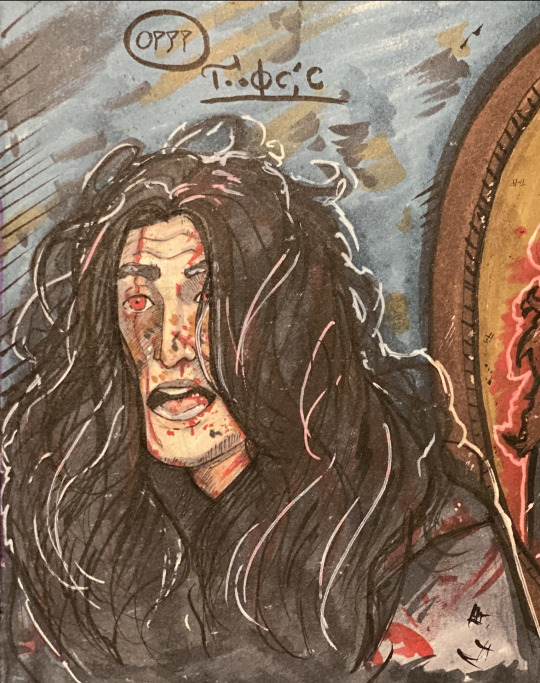
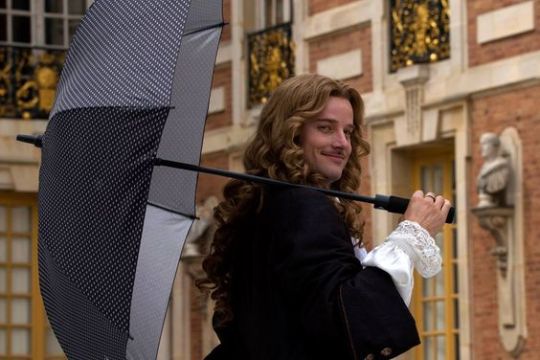
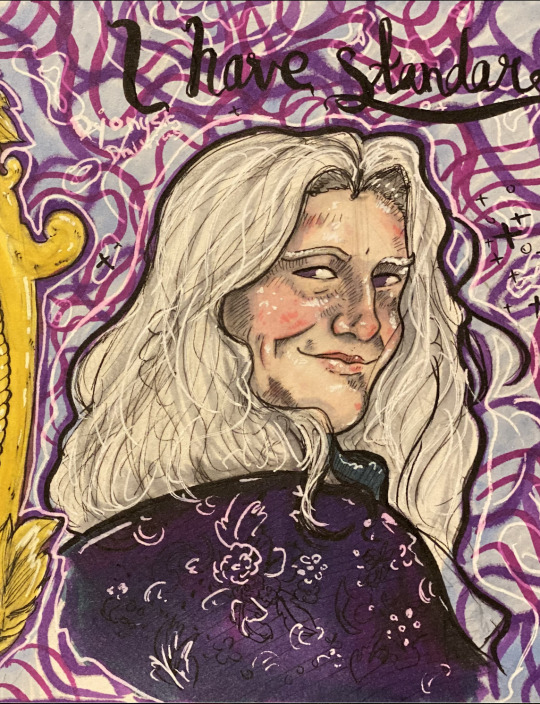


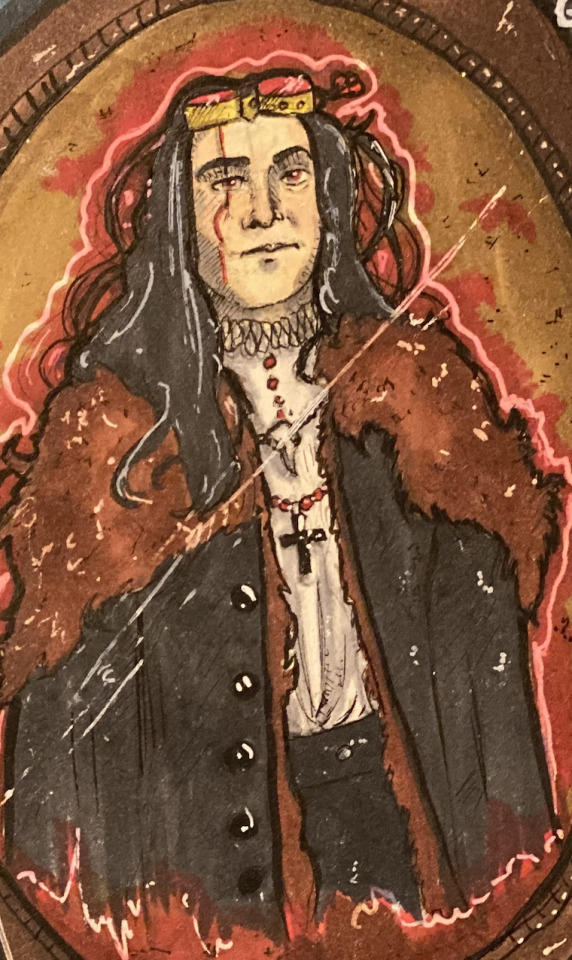



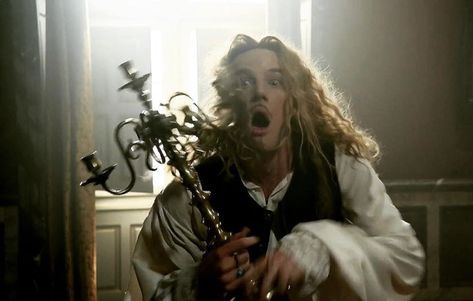
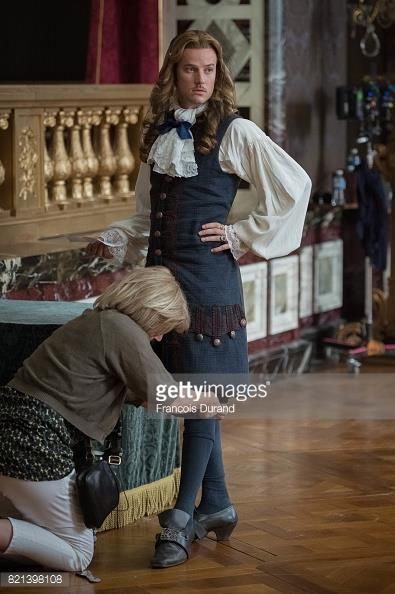
And yes before anyone asks (not that anyone would) I do use references
Like come on they are perfect.
Please tell me people know this, (where are my fellow history buffs at?)
Chevalier and Dyo do be giving 💅
#scp 049#scp 035#fanart#art#sketch#sketchbook#Versailles#Chevalier de Lorraine#Philippe I#Duke of Orléans#Please someone tell me you watched the show#slay queen
15 notes
·
View notes
Text
Chevalier (2022 film) is the musical bio that we needed
What is a quote that inspires you? Why?
Message me on Social media (@headphonesthoughts) (@headphonesTblog) and/or email me @ [email protected]
Whatever life takes you, enjoy your life. Think positive, and be positive.
–Always look to the rising sky
Read my quote or thought of the week series
Follow me on Social Media:
Instagram @headphonesthoughtsTwitter…
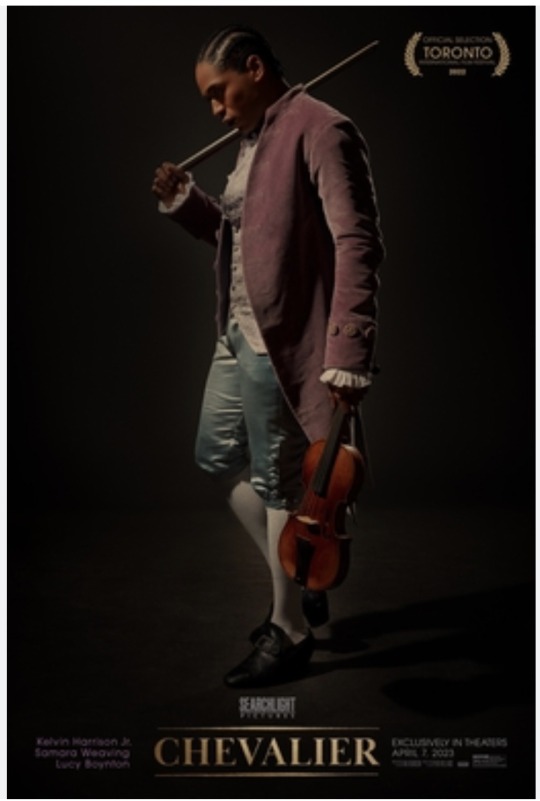
View On WordPress
#Alex Fitzalan#Andrew Lowe#blog#blogger#Chevalier#Chevalier (2022 film)#Chevalier de Saint-Georges#Creating Marie-Josephine de Montalembert#Dianne McGunigle#Duke of Orléans#Ed Guiney#Element Pictures#headphones thoughts#Jess Hall#John Axelrad#Joseph Bologne#Kelvin Harrison Jr.#Kris Bowers#Louis Philippe II#Lucy Boynton#Marc René#Marie Antoinette#Marie-Madeleine Guimard#marquis de Montalembert#Marton Csokas#Minnie Driver#Samara Weaving#Searchlight Pictures#Stefani Robinson#Stephen Williams
0 notes
Text

A series of mini portraits
#artists on tumblr#digital art#drawing#digital drawing#digital sketch#sketch#portrait#portrait drawing#Charles Perrault#Jean-Baptiste Colbert#Anne of Austria#King Louis XIV#Philippe I Duke of Orléans#Cardinal Mazarin#Nicolas Fouquet#Jean de La Fontaine#Claude Perrault#I'm so tired#Louis XIV
15 notes
·
View notes
Text
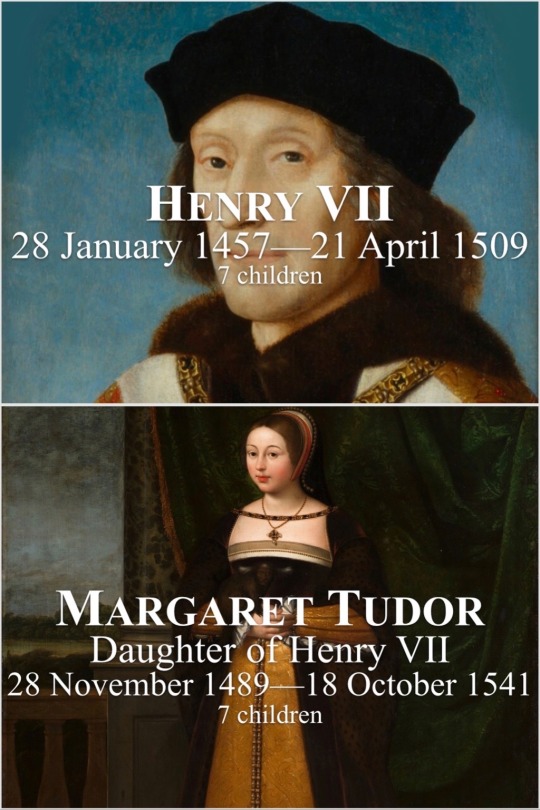



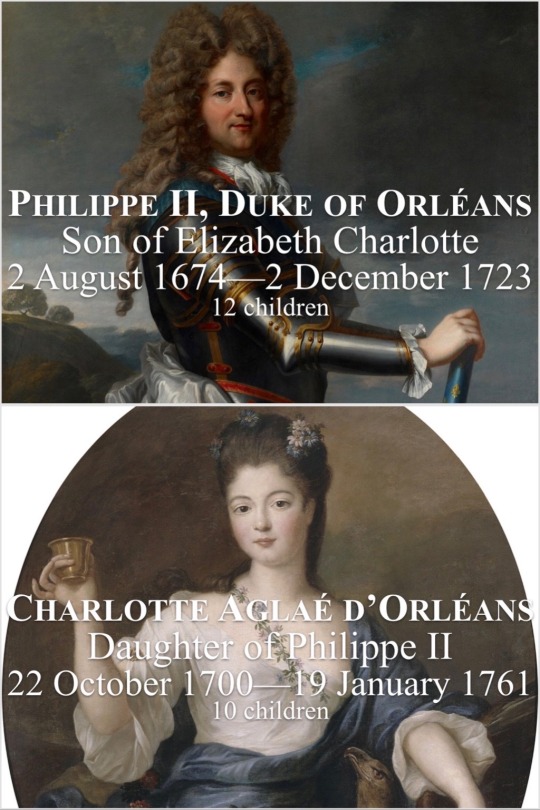
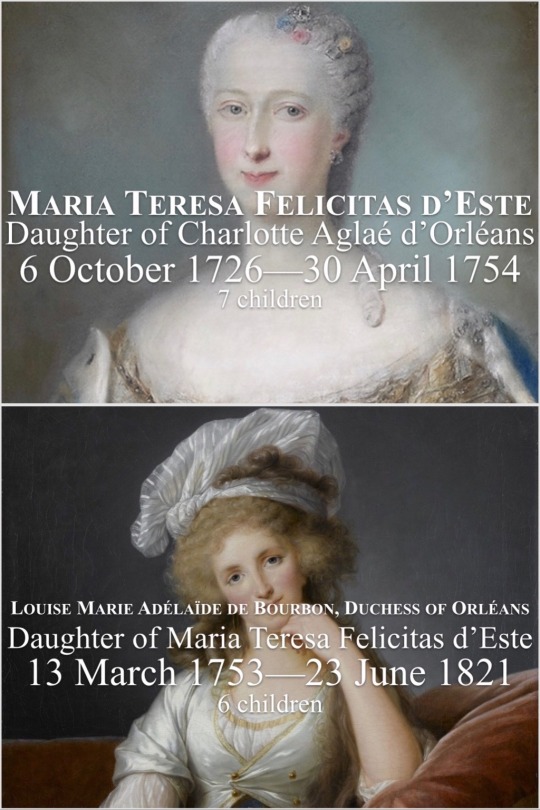




Descendants of the Tudors
#descendants of the tudors#henry vii#margaret tudor#james v#mary queen of scots#james vi and i#elizabeth stuart#charles i louis#elizabeth charlotte madame palatine#philippe ii duke of orléans#charlotte aglaé d’orléans#maria teresa felicitas d’este#louise marie adélaïde de bourbon#louis philippe i#ferdinand philippe duke of orléans#prince philippe count of paris#princess hélène of orléans#margherita archduchess of austria este#prince amedeo duke of aosta#prince lorenz#princess laetitia maria
4 notes
·
View notes
Photo

(link to yt edit)
#monchevy#alexander vlahos#evan williams#philippe duke of orléans#chevalier de lorraine#mordred#lloyd the conquerer#myedit
9 notes
·
View notes
Text
The other day I had an ask about Sophie's marriage to Ferdinand d'Orléans. In the answer I quoted a fragment of an account of the wedding by Prince Hohenlohe-Schilling, which in turn was quoted in Erika Bestenreiner's book about Elisabeth and her siblings. Well I should have digged a bit deeper because it turns out that the Prince's memoirs from which said quote comes from had been translated to English, so we actually have his full account of the celebrations. You can read the whole thing here, which includes tons of biased descriptions of several of the royal guests, but also really bad smell in your guest room, someone looking at you like if you were a scorpion and a mediocre perfomance of one of Verdi's operas during Mass.
STARNBERG, September 28, 1868.
In obedience to the Royal command I came to this place to attend, as Minister of the Household, the marriage of the Duchess Sophie with the Duc d'Alençon, son of the Duc de Nemours. Prince Adalbert and Minister Pfretzschner were appointed to act as witnesses. As the latter preferred to spend the night at Starnberg, I decided to leave yesterday afternoon at half-past two. We arrived at four o'clock, took possession of our rooms at the Hotel am See, and then took a walk, dined at five o'clock and then went down again to the shore of the lake in hopes of seeing something of the illuminations which were to take place nominally in honour of the Czarina of Russia then staying at Berg. But it was nine o'clock, and as nothing happened we preferred not to wait about any longer, and soon got to bed. The fireworks and illuminations would seem to have been very fine, but very little could be seen here. It was Sunday, and consequently a numerous and beery contingent of the general public had taken post under our windows, and kept up a horrible din and shouting. At intervals they sang ''popular airs," but these almost immediately degenerated into mere brutish yells. However, I soon fell asleep, especially as a wholesome storm of rain dispersed the gang. This morning I went to the railway station to see the Empress of Russia depart. Tauffkirchen* was there too, to pay his respects to the Empress. The King accompanied the Empress and travelled some distance with her on the railway in the direction of Munich, but I do not know how far.
At ten we drove over to Possenhofen in my carriage, which I had had brought here yesterday. It was not eleven o'clock yet, so we were taken first to our rooms. In mine there was a villainous bad smell. Soon the time for the wedding ceremony arrived, which took place in a hall of the Castle transformed into a chapel. The guests assembled in the adjoining salon, where a grand piano further blocked the scanty space available. Pfretzschner and I hastened to get ourselves presented to all personages of rank. Besides the family of the Duke Max, Prince Adalbert and Prince Karl were there. The latter bowed to me across the room with a look such as one generally bestows upon a scorpion. Then Count and Countess Trani. The Hereditary Princess Taxis wore a mauve or violet dress trimmed with white. Others present were the Comte de Paris and his brother, the Duc de Chartres, two young and well-built princes, but who give the impression rather of Prussian than of French princes. The Duc de Nemours looked like a French dandy from the Cercle de l'Union. He wore the Order of St. Hubert, as did his son, the bridegroom. The Duc de Nemours recalls the portraits of Henri IV., yet he has a certain look of his own that makes you set him down as a pedant. The young Duc d'Alençon is a handsome young man of a fresh countenance. The Prince de Joinville and his son, the Duc de Penthièvre, have nothing very striking about them. The former is old-looking and bent, too old-looking for his age, dignified and courtly. The Duc de Penthièvre has a yellow, rather Jewish face, and speaks with a drawl, but was very kind and friendly to me. Duke August of Coburg is as tedious as ever. I was interested to become acquainted with his wife, the Princess Clementine, a clever, lively woman. The Princess Joinville, a Brazilian Princess, is rather mummified, with big rolling eyes in a long, pale, wrinkled face. Then there were two daughters of Nemours there too, one grown up, the other a little girl. The ladies were all in "high dresses." The bride in white silk, trimmed with orange blossom, with head-dress of orange blossom and a tulle veil. On the sleeves braids of satin, after the pattern of the Lifeguardsmen's stripes. A lady-in-waiting attached to the Nemours party wore a flame-coloured silk with straw-coloured trimmings. When all were assembled, we proceeded to the chapel. The bridal couple knelt before the altar. Behind them, on the left, Prince Adalbert, behind him we two Ministers, and then behind us the gentlemen of the House of Orleans. On the other side the Duc de Nemours and the Duchess, likewise all the Princesses. Hancberg began the ceremony with a suitable address. Nobody cried, but Duke Max looked rather like it once or twice. The bride appeared extremely self-possessed. Before the "affirmation" the bridegroom first made a bow to his father, and the bride did the same to her parents. The Duchess's "Yes" sounded very much as if she meant "Yes, for my own part," or "For aught I care." I don't wish to be spiteful, but it sounded like that to me. After the wedding, I kissed the Duchess's hand, and congratulated her. She seemed highly gratified and pleased. The pause between the wedding ceremony and the State dinner we spent in our room. I forgot, by-the-by, to say that during the Mass a military band played an accompaniment to the religious ceremony. It began with the overture to one of Verdi's operas, I don't know whether it was Traviata or Trovatore. It was but a mediocre performance, the sort of stuff you hear played at dinners.
The State dinner was held downstairs in two halls. In one sat all Royal personages and myself along with Pfretzchner, in the other the courtiers. The health of the bridal pair was drunk without speechmaking. I sat between the young Princess of Coburg and Duke Ludwig. The dinner was not particularly long, nor was it particularly good either. On rising from table there was some more standing about, and then all the company separated. The Orleans Princes took their departure at once, about half-past four, as did the other Princes. Only the Duc de Nemours stays on till the day after tomorrow with his children.
We drove back to Starnberg in one of the Ducal carriages, from whence we return to-day to Munich by the eight o'clock train.
At dinner the "Wedding Chorus" from Lohengrin was played. It must have been singularly agreeable to the King's ex-fiancée. Another odd coincidence was that the very evening before, the lake and mountains were illuminated (for the Czarina), and the King had to celebrate in this way his erstwhile fiancée's bridal eve.
The Comte de Paris spoke to me about war and peace, and maintains that popular feeling in France is opposed to war. But he said it was difficult to gauge public opinion in France, the Press is so wanting in independence.
He is a sensible, well-meaning man, who would make an excellent Constitutional King of France.
*Count Tauffkirchen was at that time Bavarian Minister at St Petersburg.
#chlodwig prince of hohenlohe-schilling#sophie in bavaria duchesse d'alençon#ferdinand d'orléans duke of alençon#prince louis d'orléans duke of nemours#and many more!#memoirs of prince chlowdig of hohenlohe-schillingsfuerst#house of wittelsbach#house of orléans
6 notes
·
View notes
Text
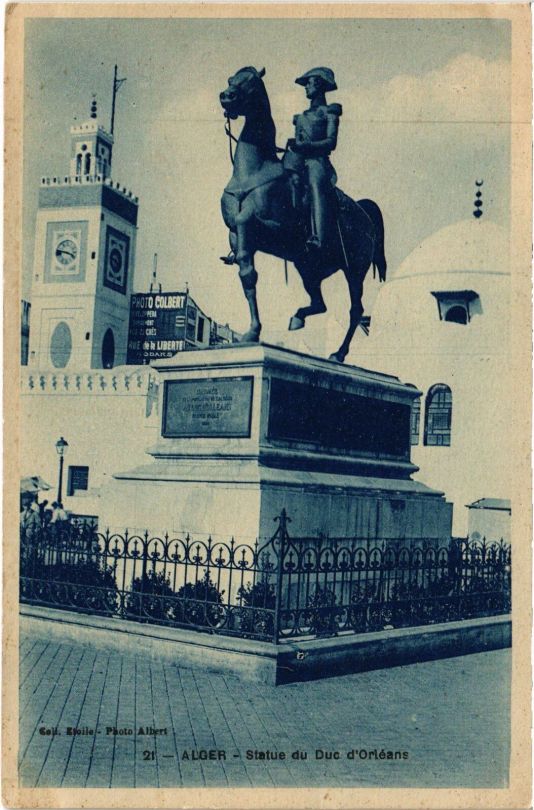
Statue of the Duke of Orléans in Algiers, Algeria
French vintage postcard
#vintage#tarjeta#algiers#briefkaart#postcard#photography#postal#carte postale#orléans#duke#sepia#ephemera#algeria#historic#orlans#french#ansichtskarte#postkarte#postkaart#photo#statue
1 note
·
View note
Text
Fantasy Guide to Regents and Regencies

A Regency is a period of time where another party rules of behalf of a monarch who is either too young, too ill or absent. A Regency can either be the monarch's own choice or a decision made for them on their behalf by a third part, usually government. Either way, a Regent is selected to act as temporary Head of State whilst the monarch is incapable of ruling.
Who can be a Regent?

A Regent is an important office, even though its a temporary one. Regencies of child monarchs generally either go to the Consort, though there are all sorts of reasons why this can be blocked. Sometimes governments and kingdoms are uncomfortable with foreign consorts with uncertain allegiances ruling the kingdom or sometimes the government just doesn't approve on the basis that they doubt the Consort's skill set. Other candidates for Regencies are nearly always family members such as uncles, aunts, cousins and even children of the monarch (especially if they are absent from the country or ill). But a Regent doesn't have to be a royal. They could just be a noble elected to the position (Sir William Marshall) or even one that siezes power for themselves (Richard of York) or even a council made up of Regents, headed by a Lord Protector.
Who makes a Regent?
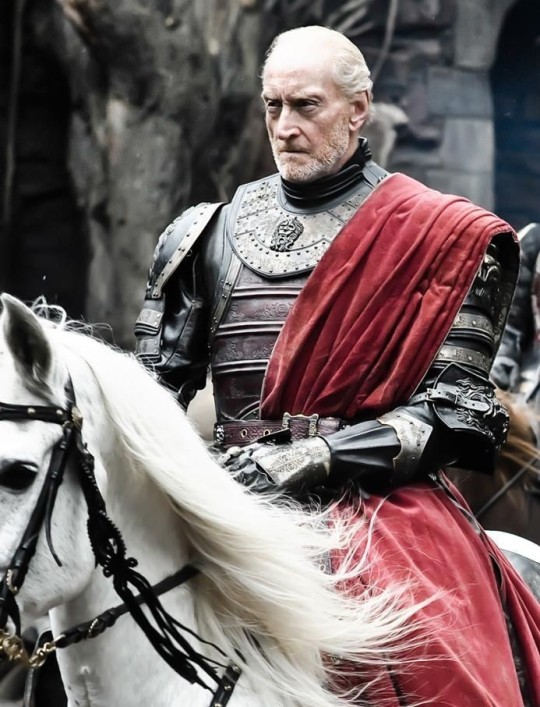
As I mentioned before, monarchs can appoint the Regent that will replace them in certain cases. For instance, a monarch would chose the Regent if they were voluntarily leaving the country or they might designate a chosen Regent on their deathbed or just in case of emergency. But they wouldn't chose a Regent if they were ruled mentally incompetent. In those cases, the government would chose.
The Powers and Responsibilities of a Regent

A Regent is the acting head of state but they are not the monarch. They do not have the right to wear crowns or have a coronation and are not granted the hall pass of divine right. A Regent is referred to as their own title, say for example Duke of X, Regent of Y or Prince Regent. They are merely there to fill in for the monarch. A Regent would meet with the government, make decisions with the approval by government and sign offical documents. In cases of an absent monarch, a Regent may need the approval of the monarch themselves. Regents of child monarchs would usually include their charges in the country's running, either as spectator or student. A Regent, being temporary Head of State, would also have the responsibility of ensuring a natural cessation of their power to their monarch when their term is over. Some regents are better than others at handing over power.
Notable Regents of History
George IV, Richard III, Anne of Austria, Katheryn Parr, Richard of York, Margaret of York, Katherine of Aragon, Catherine de Medici, Louise of Savoy, Phillippe duc de Orléans, Edward Seymour Duke of Somerset, Sir William Marshall, John Duke of Bedford, Humphrey Duke of Gloucestershire, John Dudley Duke of Northumberland.
#Fantasy Guide to Regents and Regencies#Regent#Royal guide#Fantasy Guide#Writing guide#writers resources#writing#writeblr#writing resources#writing reference#writing advice#writer#writer's problems#spilled words#writer's life#Writer's reference#Reference#nanowrimo
666 notes
·
View notes
Text
tag game: last five google searches
@brendadaaedestler tagged me to list the last 5 things I googled for a fic! I've gone on so many wikipedia journeys this week, but these are the things I actually searched for (in firefox, so technically not google but whatever):
historical cook tent
french regency balls
duke of orléans
louis XIV
Norse mythology
tagging @kotaka-kun @emotionalmotionsicknessxx @flora-gray @shinyfire-0 @ashadeintheshade but no pressure!
33 notes
·
View notes
Text

Valentine of Milan weeping for the death of her husband Louis of Orléans
by Fleury François Richard
#valentina visconti#mourning#duke of orléans#art#painting#troubadour style#history#europe#european#valentine de milan#valentina of milan#valentine of milan#duchess of orléans#visconti#house of visconti#biscione#dragon#serpent#fleur de lis#heraldry#coat of arms#medieval#middle ages#france#milan#northern italy#italy#fleury françois richard#stained glass
42 notes
·
View notes
Text
Infanta Maria Francisca's Wedding Tiara
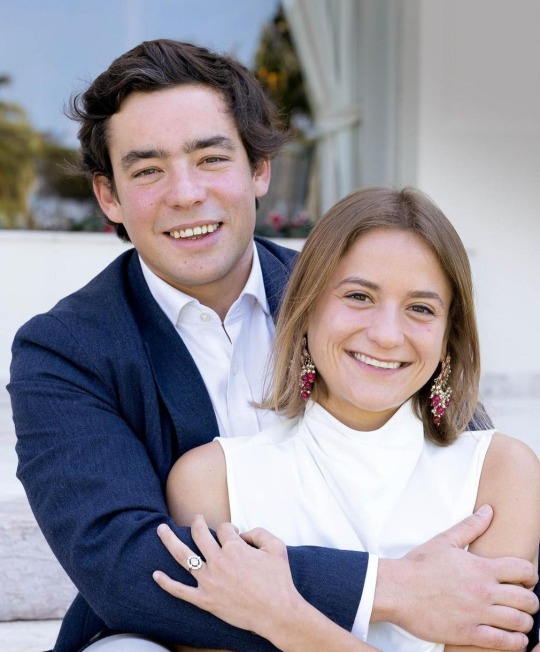
The Duke and Duchess of Braganza have announced that the wedding of Infanta Maria Francisca, Duchess of Coimbra, and Duarte de Sousa Araújo Martins will take place on Saturday, October 7th at the Basilica of Our Lady and Saint Anthony within the Palace of Mafra. Thanks to an interview with Observador, we know all about the bride's planned wedding jewelry. The quotes below have been run through Google translate.
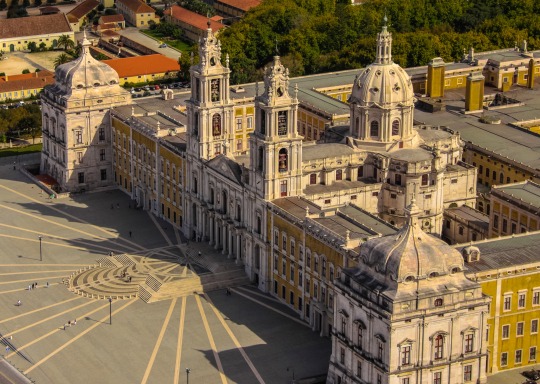
Infanta Maria Francisca will wear Queen Amélie’s Diamond Tiara which is the same one worn by her mother, the Duchess of Braganza, at her wedding in 1995. "I feel very honored, very lucky, that they lent it to me, because it is a very valuable tiara. I feel that I am not that worthy of wearing the tiara and I am really happy that they gave me this opportunity." I don't have a post on it yet but here are some from other blogs. It was made in 1886 by Leitão & Irmão and was a wedding gift to Queen Amélie from her father-in-law, King Luís I of Portugal, so you'll sometimes see it called the Dom Luis Diadem.
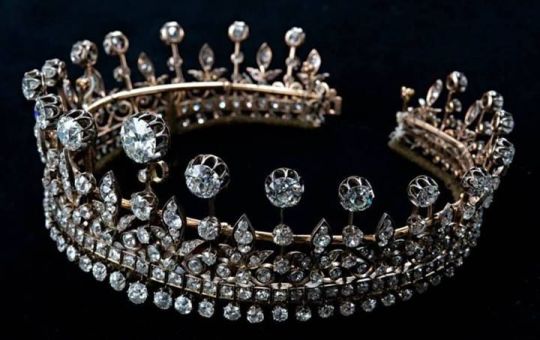
Along with the tiara, Maria Francisca will wear the same diamond earrings that were worn by her mother on her wedding day. They were a gift from the Duchess of Braganza's mother, Raquel Pinheiro de Castro Curvello.
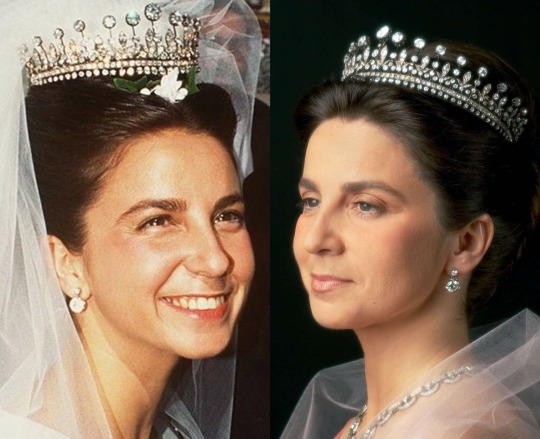
Maria Francisca will also wear a sapphire and diamond bracelet that belonged to Queen Amélie on loan from a friend. "A very dear friend of mine, who has an antique shop, is going to lend me a Queen Amélie bracelet. He told me 'I have this bracelet from Queen Amélie that I bought at an auction house and I insist that you wear it because it belongs to your family and has sentimental and historical value'."
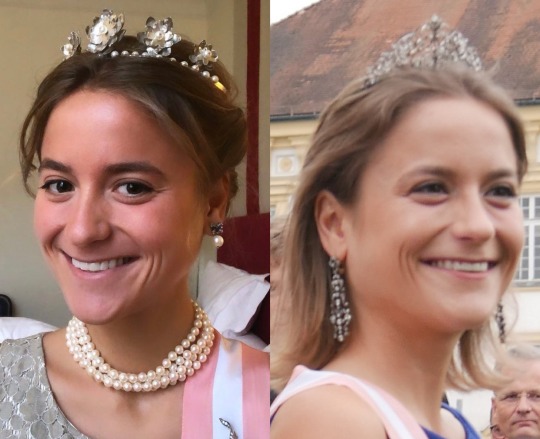
For the reception after the wedding, Maria Francisca will wear a pair of earrings that belonged to her grandmother and namesake, Princess Maria Francisca of Orléans-Braganza. The diamond from her engagement ring was taken from these earrings and the groom replaced it and another diamond with emeralds. "Both in the ring and in the earrings, I have my grandmother Francisca and Duarte represented."
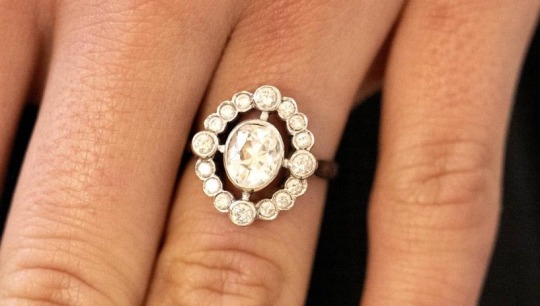
The former Portuguese royal family are generally well regarded and even attend state banquets in Portugal. We already know that some of the Lux royals will be there and I also expect other former royals to attend.
The wedding will be televised at 3:00pm local time on TVI (Televisão Independente) and I'll post a non-geoblocked link if I can find one.
#Tiara Talk#Infanta Maria Francisca#Portugal#Portuguese Royal Family#tiara#bridal tiara#Duchess of Braganza#royal jewels#royalty#royals#diadem
119 notes
·
View notes
Note
binge-read de rerum natura in an evening and it was a deliiiight. i loved the repetition of lines / themes from the initial donella torturing vellioth -> vellioth torturing cazador. also loved the sinking feeling, going in, knowing nothing about it, when i finally recognised emin as cazador (for a whole ten/twenty pages was convinced he was just this really dishevelled looking wretch who had nothing to do with him). what made you decide to name cazador differently in this?
also, one more question: have seen lots of different vellioth designs, and i was interested in what inspirations you took from when designing your version of vellioth? were there any particular faces, visual cues, etc.?
YESSSS i was gonna originally just call him cazador but then i found out in dnd that elves actually have baby names! they’re born they get a baby name & then they keep that baby name until they’re about 100 years old & then they choose their own adult name. i love the opportunity there to present that sort of misdirection and “WAIT A SECOND” you experienced, im thrilled it worked hehe
i love all the different interpretations of the vellioth character floating around, everybody got like the base stock & then added their own seasonings & proteins in to make dozens of different wonderful soups. creative freedom rules. ANYHOO i based my physical interpretation of vellioth heavily on the french Bluebeard fable; i wanted this enormous imposing masculine figure to contrast with the frailty of his spawn (and make it all the more satisfying when he got taken down) i actually put him in a bunch of 17th century french nobility garb throughout, the party outfit is meant to be ripped straight from a 1634AD portrait of gaston duke of orléans by sir anthony van dyck
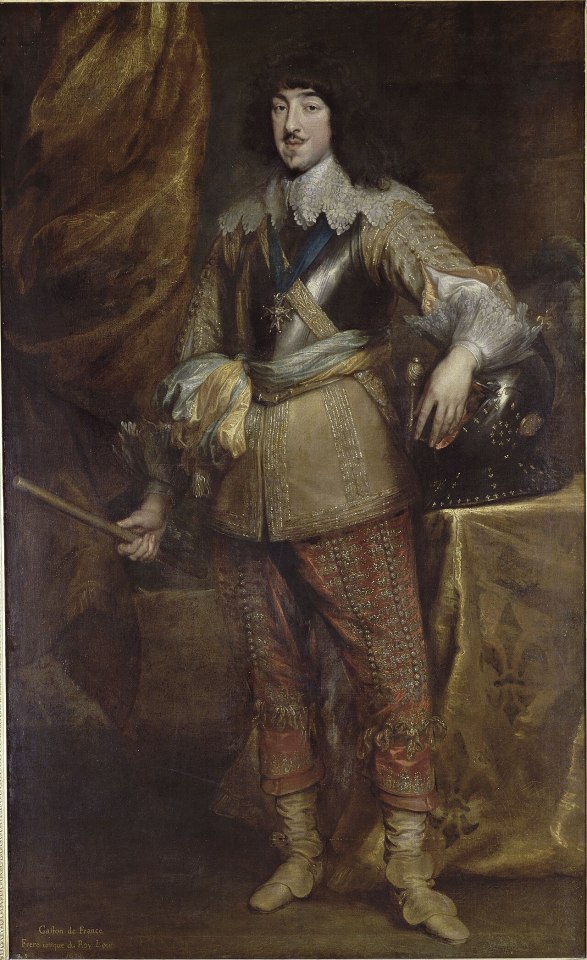
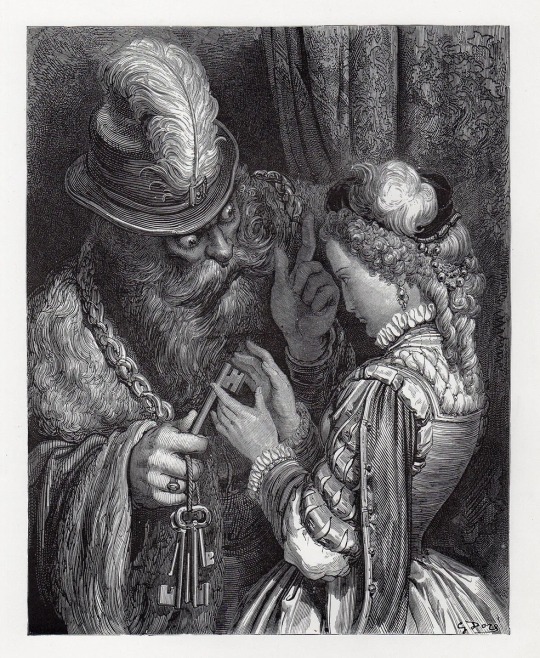
37 notes
·
View notes
Text
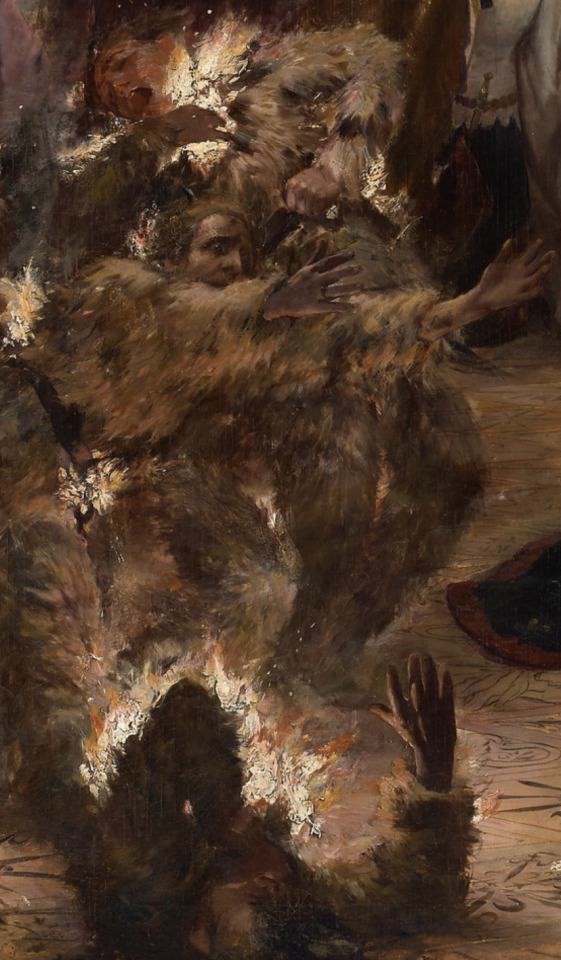

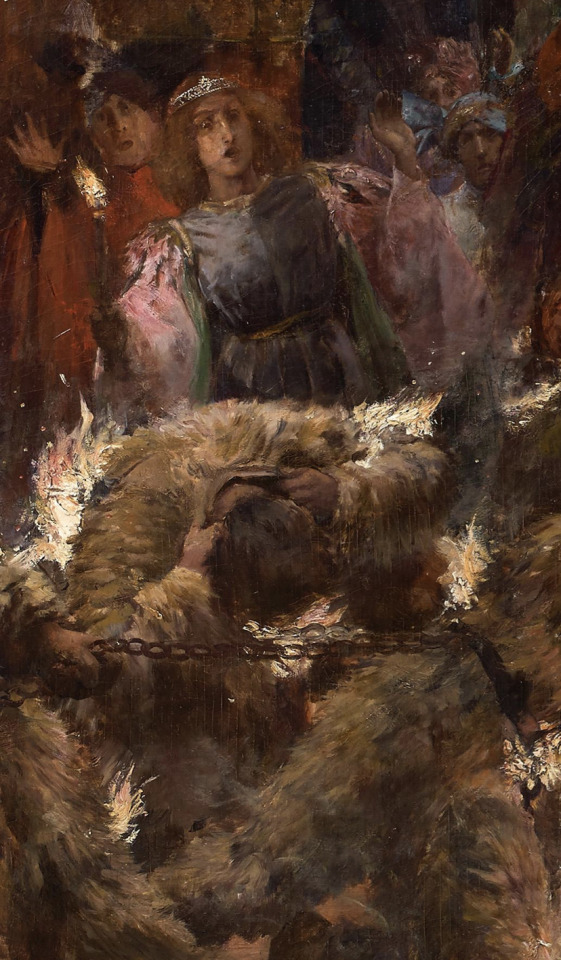

Le Bal des Ardents (The Ball of the Burning Men) by Georges Rochegrosse (1889)
Also called the Bal des Sauvages (Ball of the Wild Men), the event was a masquerade ball held on January 28th, 1393 in Paris at which Charles VI of France along with five others of the French nobility performed in a dance dressed as mythical “wild men”, commonly found throughout medieval European folklore. Four of the dancers were killed in a fire caused by a spectator, Charles's brother Louis I, Duke of Orléans, who, after arriving late, held a burning torch (which was prohibited in the chamber to minimize the risk of fire) above the head of a performer in an attempt to identify him when a spark caught the man’s leg alight, quickly spreading across the flax-covered, resin-soaked linen costumes which were sewn on to the chained dancers. Charles was saved by the quick-thinking actions of his aunt, Joan II, Countess of Auvergne, who sheltered the king under her skirt and another of the dancers survived only by throwing himself into an open vat of wine.
693 notes
·
View notes
Text

Franciscus Joseph Octave van der Donckt - Self portrait - 1789
Franciscus Joseph Octave van der Donckt (30 June 1757, Aalst - 16 August 1813, Bruges) was a Flemish portrait painter, miniaturist and pastellist. He is also referred to as Jozef Angelus Van der Donckt, as well as several other variations, too numerous to list.
After the early death of his father, his mother took him to her hometown of Bruges.
He had his first drawing lessons with an artist named Jacob De Rijcke, followed by painting lessons from Antoon Suweyns (1720-1789), Joseph-Benoît Suvée and Jan Anton Garemyn. At the same time, he studied the humanities at the Jesuit College. After graduating, his mother sent him to Marseille to learn the merchant trade.
He continued to be interested in art, however, and eventually moved to Paris, where he made the acquaintance of Louis Philippe I, Duke of Orléans and was allowed to copy paintings in his collection. He then travelled through Italy and returned to Bruges in 1791, becoming Director of the Academie voor Schone Kunsten. In 1796, he had a successful showing at the Salon in Ghent.
He is known primarily as a portrait painter, with a fondness for pastels. His most familiar works are a self-portrait and one of his niece, Sylvie de la Rue, who married the painter Joseph Denis Odevaere.
He also took the occasional student; notably Albert Gregorius. He is often confused with his son, François, a history painter about whom little is known.
19 notes
·
View notes
Text
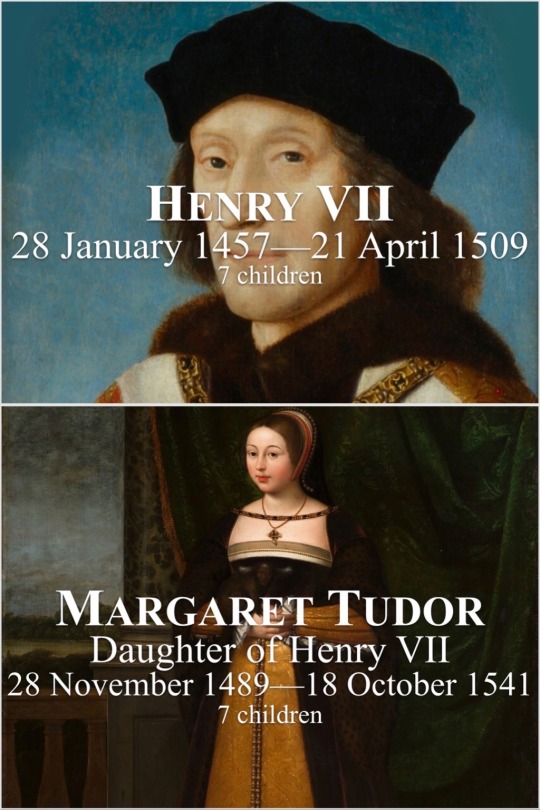





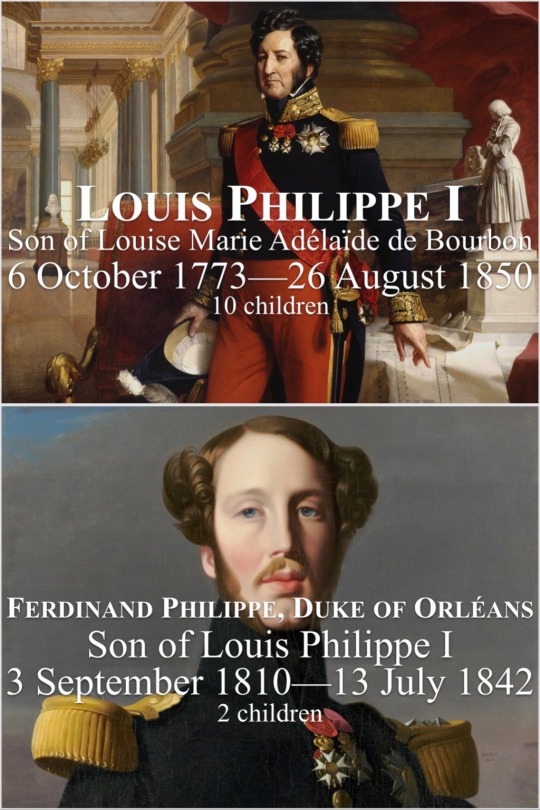

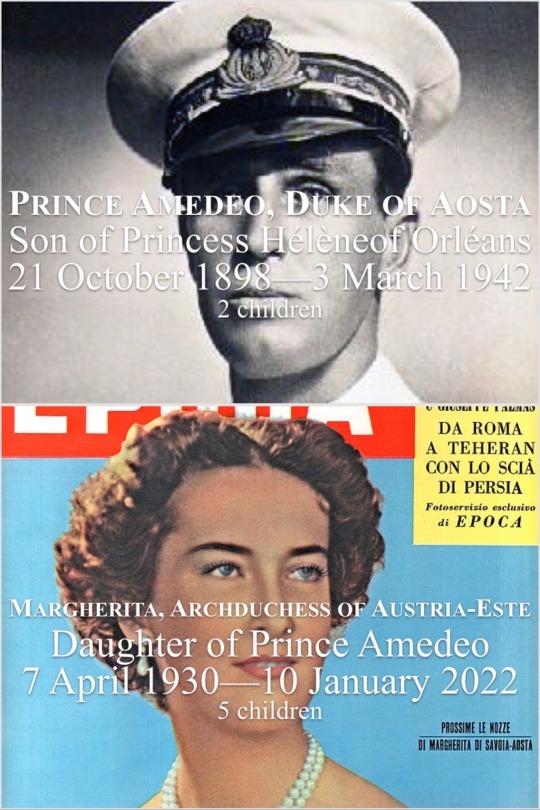

Descendants of the Tudors
#descendants of the tudors#henry vii#margaret tudor#james v#mary queen of scots#james vi and i#elizabeth stuart#charles i louis#elizabeth charlotte madame palatine#philippe ii duke of orléans#charlotte aglaé d’orléans#maria teresa felicitas d’este#louise marie adélaïde de bourbon#louis philippe i#ferdinand philippe duke of orléans#prince philippe count of paris#princess hélène of orléans#prince amedeo duke of aosta#margherita archduchess of austria este#prince lorenz#prince amedeo
4 notes
·
View notes
Text
Louis XIII and his cooking adventures 🍴🥞
When it comes to our Louis XIII cult, I often refer to the king's iconic omelettes, but what about his other stuff? For example, he really loved sweets (like beignets or jams), but could he also cook them? The answer is YES, and that's not even all yet!
Louis was a curious child who's head was already filled with various interests and cooking became one of them when he was only ten years old at the time (which is quite unusual for a king). First ever case of the king cooking was recorded on february 11th of 1611, when he was preparing milk soups for the Duchess of Guise / Catherine of Cleves. So milk soup, most likely, could be Louis' very first dish made by himself!
Of course many kids have a sweet tooth and our precious omelette king was not an exception which I guess is why he started to learn how to cook mostly from recipes of sweets. Also, take a shot every time I say "sweets" or "cooking" (don't..) 🕊️
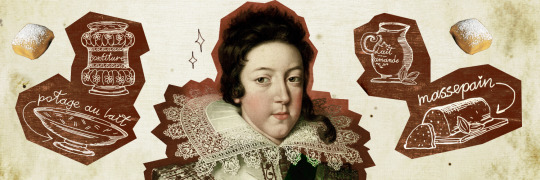
So, among 17th century royal sw- *ahem* DESSERTS we had in our menu – a jam, quince jelly, beignets (basically french donuts) and marzipans. In a well-known, among many of y'all Louis stalkers, journal of his doctor Jean Héroard I found some clear evidence of Louis XIII cooking some of these himself, so here it is feat. me periodically panicking over my own translation because my half-french friend is too busy atm and I don’t wanna bother them:
June 6th, 1611 — «He walks through the corridor from the study to the paneled gallery where he had an oven for making jams, he is amused to see how it's done.» I know it's not exactly him cooking, but I just wanted to leave it here :")
October 15th, 1612 — «Madame comes to see him; he has fun making jam with Mademoiselle de Vendôme»
January 29th, 1613 — «He often has fun making almond milk and marzipans at Madame's house.»
March 6th, 1615 — «It was very cold; he goes to the kitchen, makes omelettes, beignets, fried eggs; it was he who made them and ate a little of that he tasted.» Pretty sure the last few words could be translated better because it's always rather my terrible french or a little confusing way of Héroard's writing, so feel free to correct me.
February 3rd, 1616 — «He is preparing a small snack of dry jam for the queen, who must come to him at two o'clock. After going back to bed, he happily forms various battalions of his little silver men.»
February 5th, 1622 — «He leaves Saint-Germain, goes to Pontoise, where he enjoys making and eating beignets; while dining at Cormeille, he suddenly goes to the goblet in which he makes little cream puffs.» The original text says «petits choux au lait» and I have no idea what could that exactly be, but it seems like some sort of little éclair-like buns made of milk? Little cream puffs?? Maybe by «choux au lait» Jean meant «choux à la crème» which were invented back in 1540 in France.
I know you've been waiting for the quince jelly too, but unfortunately I couldn't find anything about the jelly :c Though, judging by what we've got here It's still quite possible Louis could cook quince jelly as well, hmm... Anyways, if you know something I don't know of the jelly mystery, hit me up!
In the future, this great love for desserts will be inherited by his son Philippe I, Duke of Orléans (brother of Louis XIV), who is also a very interesting character in history!!
In conclusion I must say that Louis not only had a sweet tooth, but also a big love for trying out different things, all this curiosity and pure excitement, even when it comes to something so simple and familiar like food, will never ever stop to fascinate me :"D
Btw speaking about Louis 'trying out different things', I of course still have a lot to share on this as well! Stay tuned and have a good day/night 💘💘💘
#I can't believe I wasted more time on the picture than the post itself#But at least now I can go make more Louis content :“”D#In my next post I will most likely cover something that is not food because he had A LOT of other talents obviously hahahaah#Honestly I could talk about him 24/7.... I just can't always be online to flood you with all this :“(#17th century#louis xiii#history of food#louis xiii le juste#king louis xiii
18 notes
·
View notes